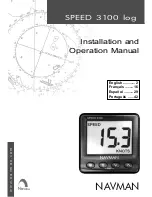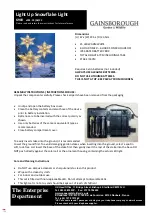
Instruction Manual for SGP Dual Head Pneumatic Filler
-2-
Chapter 1 Overview
1-1 Overview
The SGP Series Dual Head fully pneumatic filling machines are newly designed for liquid, paste,
and cream filling, and its filling amount can be adjusted as required based on the specified range,
featuring high stability, reliability and filling accuracy.
1-2 Features
1.
All surface materials of this machine are crafted of 316 stainless steel, which features high
acid-resistant and corrosion-resistant properties, as well as presenting a high quality finish.
2.
You can operate it safely and easily, and adjusting the filling amount can be performed within the
range as required with high accuracy.
3.
Its reasonable layout enables you to easily disassemble, safely operate, and easily clean it the filler.
4.
Due to a total lack of electrical components, this filler can be used safely in a wide array of
hazardous or moist environments.
1-3 Parameters
Item
SGP-1000-2
Available range
Cream/Liquid/Paste
Filling range
Cream
100-1000ml
Liquid
——
Filling accuracy
Cream
±2%
Liquid
±1%
Working air pressure
0.4-0.5MPa
Throughput
0-30 bottle/minute*2
Outline (length x width x height)
——
Net weight
——
Note: For this series of machine, the maximum liquid amount to be filled should be less than
5%-10% of the cream amount.
1-4 Working Principle
The cylinder runs in reciprocating and linear manners to drive the piston and generate suction and thrust
so as to draw and push your product.
1-5 Working Process
Open the inlet valve, adjust the working air pressure and select the working status (automatic or
semiautomatic). During the operation, the rotary cylinder linkage is turned (opens a path towards the
front while sealing towards the top), the fill head cylinder moves upwards to open the discharge valve,
the piston cylinder actuates to move the piston forward, which dispenses material for filling (the speed
can be adjusted by the “Behind” valve); after that, the fill head cylinder moves downwards to close the
discharge valve to prevent dripping, the rotary cylinder linkage returns (seals towards the front while
opening a path towards the top), the piston cylinder actuates to move the piston rearward, which pulls
new product into the chamber for the next filling (speed can be adjusted by the “Front” valve). Thus the
operation is accomplished.
























